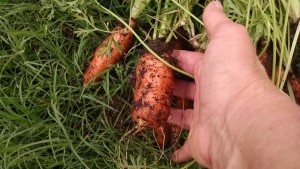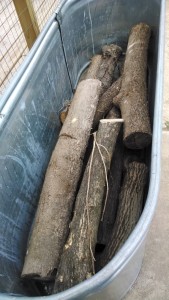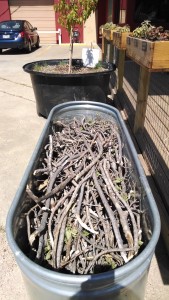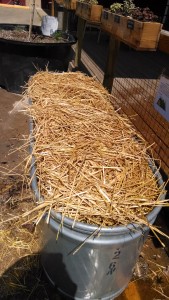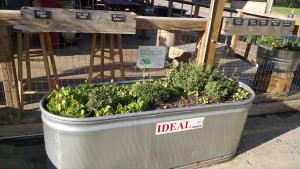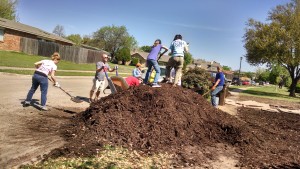A few weeks ago, I wrote about planting techniques that worked in drought conditions. Now it’s apparent that heavy mulching also works in flood.
A garden columnist recently recommended that gardeners just pull their spring tomato plants and give up until fall planting. The reason was that so many tomato plants were suffering from the abundance of rain, and suffering from fungus and other ills caused by wet conditions and wet feet.
However, as you can see from the pictures, tomatoes planted using heavy mulch – and in some cases only mulch – fared quite well and are flourishing and producing tomatoes. The tomato plant in my straw bale also is doing well, blooming and getting ready to put forth tomatoes. In addition, my container tomato just yielded a lovely cluster of cherry tomatoes. It is not suffering either.
The secret? DRAINAGE. As long as the days are long, there are a reasonable number of days in the 80s, and the plant’s feet are wet, the tomato will be just fine.
What about fall tomatoes? There are a couple of ways to achieve this without going out and buying new transplants (although it’s nice to support local businesses).
First, June is the time to start seeds so that your seedlings will be ready to plant in time for a fall crop.
Second, the suckers that develop at the junction of each tomato branch can be removed and placed in a rooting mix to develop roots and should be available for transplanting in time for a fall crop.
Finally, there is the lazy person’s way…just prune those plants that are doing well. Tomato branches that have borne for the spring will be less likely to bear fruit for the fall. So, prune them off during the heat of the summer when production has fallen off. Those suckers I mentioned earlier? Leave them and they will develop new branches, ready to bear at the right time. You can get two crops off the same plant, without the labor of transplanting or the expense of buying new transplants.
I mentioned some time ago that I “winter” plant my carrots. With the cold weather, their growth and maturity has been delayed, but they are now ready for harvest. Since the carrots were lonely in their container, I transplanted a couple of tomato plants to keep them company this spring. As the tomatoes have now grown and need space, I started harvesting carrots. Wow – was I surprised (I always am)! Here’s a picture of the harvest of these few. There are many more waiting. They are bound for a roasting with some red potatoes and onions, chunked and covered with olive oil and a sprinkling of time. Add a little water and cover the roaster, then put in the oven for an hour or till everything is nice and tender. Another lazy person’s dinner – and so delicious!



